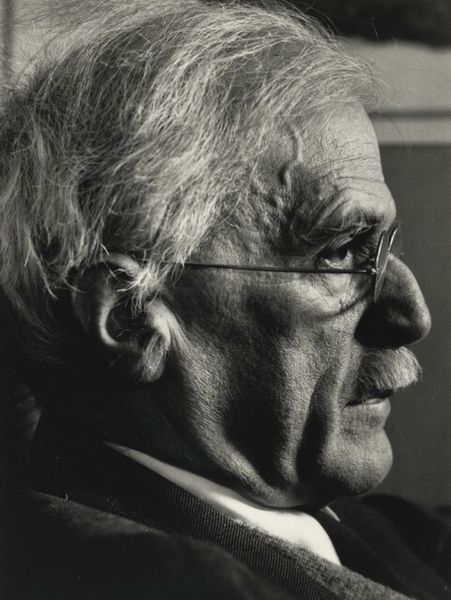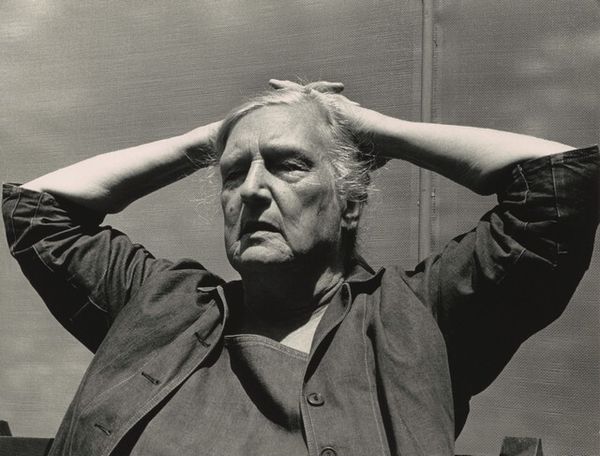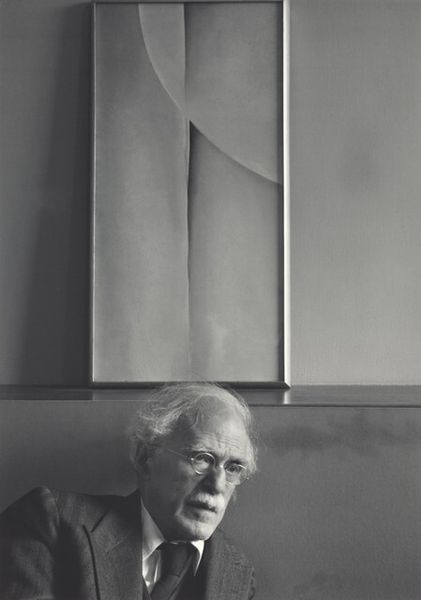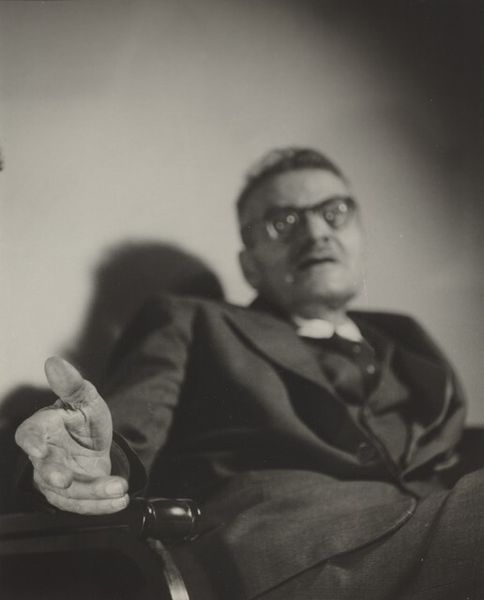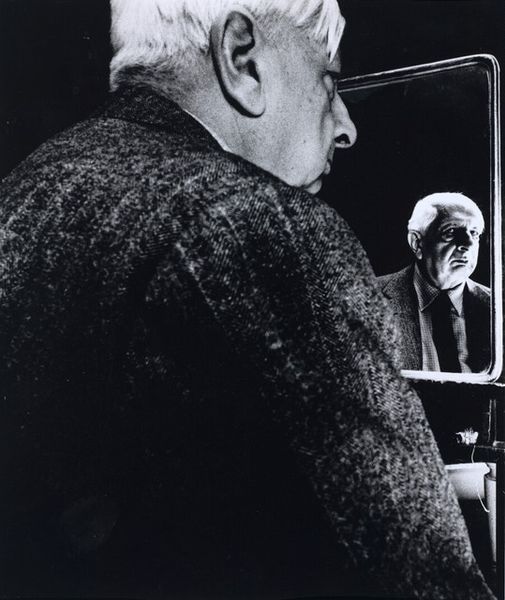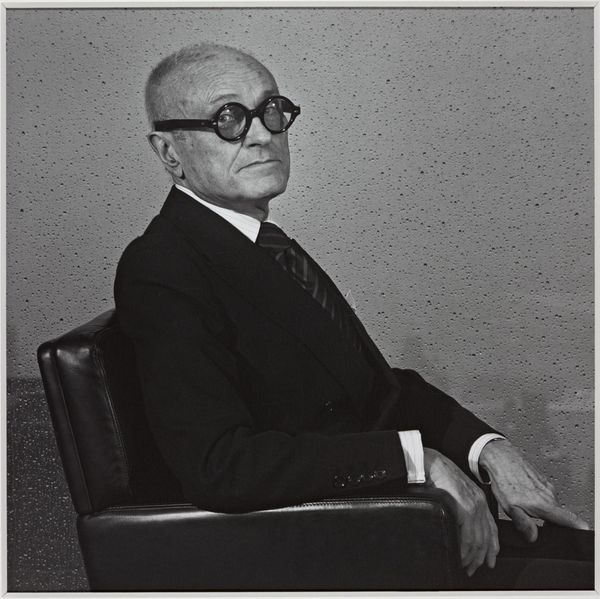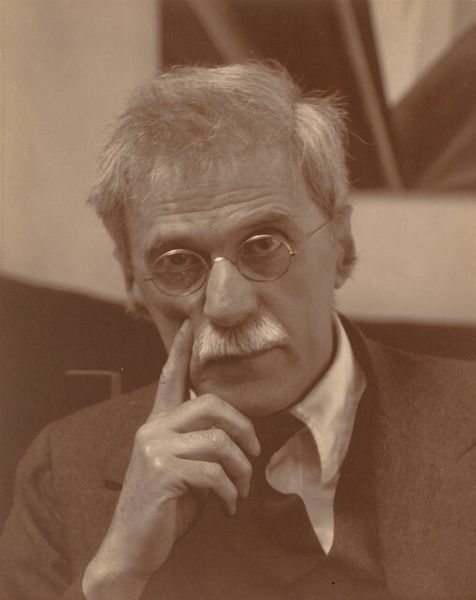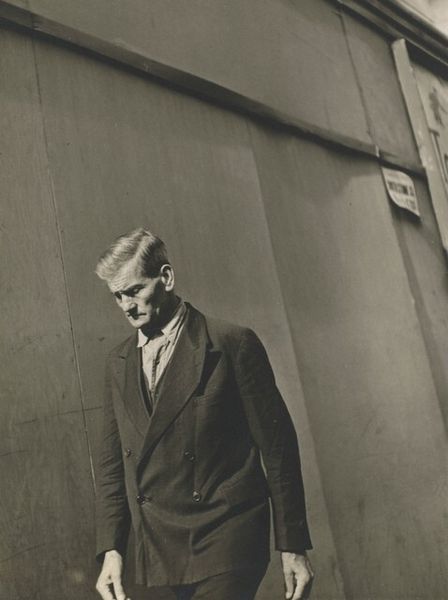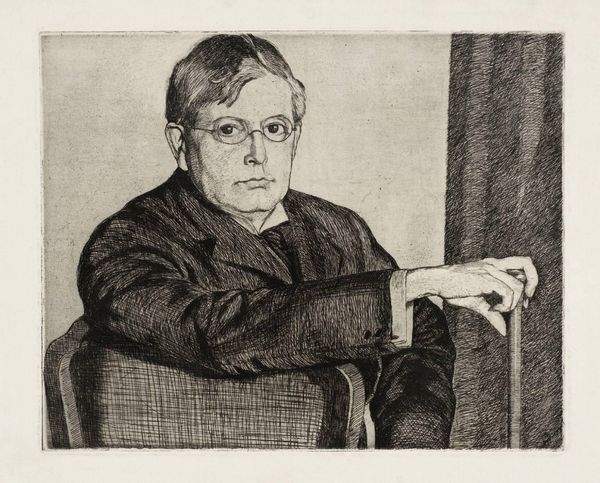
photography
#
portrait
#
black and white photography
#
photography
#
historical photography
#
black and white
#
monochrome photography
#
realism
#
monochrome
Dimensions: image: 25.2 × 20.8 cm (9 15/16 × 8 3/16 in.) sheet: 34.6 × 27.8 cm (13 5/8 × 10 15/16 in.)
Copyright: National Gallery of Art: CC0 1.0
Curator: Immediately, I sense a pensive mood, a stillness in the subject. The monochrome tones add to the sense of gravity. Editor: That’s an astute observation. The work is a portrait of Roy Emerson Stryker, taken by Gordon Parks in 1946. It’s a black and white photograph. Curator: Stryker was head of the Farm Security Administration, wasn't he? The FSA documentation project had a profound effect on the American collective memory. Editor: Indeed. And Parks, under Stryker’s guidance, became a crucial voice, documenting social issues. Seeing him photograph his mentor… it closes a circle. There's almost a sacred quality to recording those who record us. Curator: Look at how the light catches the rims of Stryker's glasses and the creases around his eyes, creating soft halos. It suggests a saintly weariness, someone carrying a weighty mission. The posture, reclining with arms behind his head, almost implies a passive receiving of fate. Editor: That is an interesting observation. The portrait also subtly hints at the power dynamics inherent in their relationship. Parks, the protégé, captures Stryker in a moment of apparent vulnerability or reflection, which allows Parks to become the authoritative figure shaping Stryker's image for posterity. It's also intriguing to note this photograph appeared shortly after the FSA project ended. What sort of pressures are revealed by it? Curator: And how did this portrait impact the evolution of symbols linked to power, the ways it is maintained, challenged, and visualized across cultural forms? This makes me think about our modern perception of what power looks like; this photograph feels relevant now. Editor: Absolutely. And, you know, I always think about the social and political ramifications whenever revisiting Parks’ body of work. Considering Stryker's legacy as a curator and organizer of photographic documentation of the United States during the Depression era provides us all with a crucial intersection of art, history, and social policy. Curator: It definitely inspires new insights each time I encounter it. Editor: Me too. It also makes me wish I could talk to Parks about his compositional and thematic choices, decisions that clearly resonate still.
Comments
No comments
Be the first to comment and join the conversation on the ultimate creative platform.
